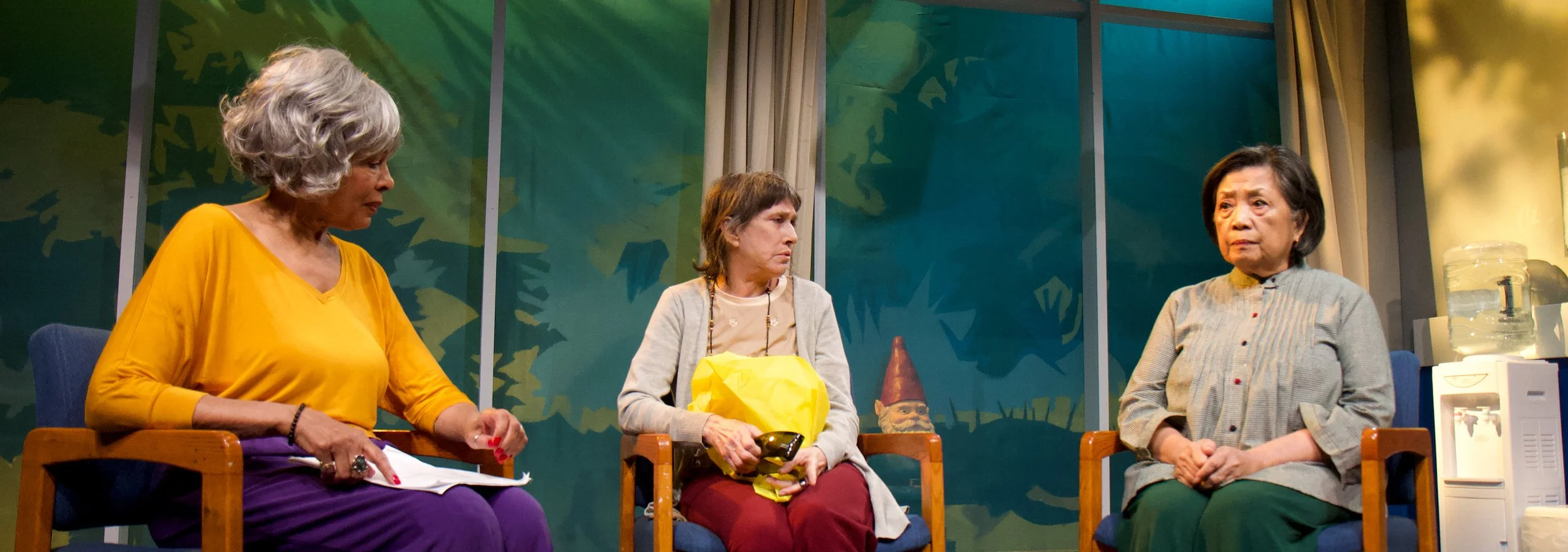It sounds cliché to say there are so many things to love about Paris. The beautiful quality of its light of course is one, but so too the French attention to detail. I’ve experienced this trait nationale observing the aesthetic floral landscaping of a bus shelter on the Champs-Élysée; a simple plate of roasted chicken in an average café, cooked to absolute perfection; and the attentive, intense way a would-be lover might stare into one’s eyes on a warm summer’s day in the Jardin des Tuileries. Luckily for viewers, Charles Mee’s delicious Fêtes de la Nuit, now playing at the Ohio Theater, channels such personal recollection, plus many more sensual delights, via his love letter to Paris. More of a pastiche than a traditionally structured narrative, directed by Kim Weild (and the inaugural show of her non-profit WeildWorks Theater Company), Fêtes de la Nuit, (or "Celebrations of the Night") is a moveable feast of vignettes exploring the lives and loves of modern-day Parisians, communicated through dialogue, monologue, music, dance, and even sign language. The versatile set pieces, moved by the actors, quickly transform the large open space of the Ohio into familiar French settings like sidewalk café, dance floor, art studio, fashion runway, and park space. This wonderful collaboration of visual imagery, by scenic designer Brian H. Scott, includes a large screen and draped fabrics utilized for a myriad of multimedia effects by lighting designer Charles Foster, video designer C. Andrew Bauer, and film consultant Ismael Ramirez. The screen works as backdrop, wall, sky, and movie theater, and its transitions are handled artfully by the actors.
Such a reliable frame is necessary for all the configurations of action, and while the overall color scheme conveys a Valentine’s Day palette of red, white and black, the multitalented cast of 17 paints a rainbow of emotion, showing the humor, fragility, silliness, desperation, passion, confusion, and all the many shades of love and lust we mere humans are faced with. The entire company—with whom Weild shares choreography credit—dances, poses, flirts, fondles, expounds, worships, grieves, and argues its way through Mee’s text, which the playwright makes available online along with all of his other works (many of which also ruminate on the themes of love).
Another exciting component of the piece is the casting of three deaf actors: Alexandria Wailes, Jubil Khan, and John McGinty; and the inclusion of American Sign Language into the production, which adds its own passionate and expressive cadence. Many of the scenes are visceral and sensual: the art class for example, with life models Khris Lewin and Jessica Green, is beautifully executed. Green’s skill as an aerialist (and Cirque de Soliel veteran) becomes apparent, and her graceful, acrobatic movements throughout give another layer to her lovesick character Catherine.
Mee makes reference to the famous Robert Doisneau photograph, and other French iconography like the familiar Eiffel Tower, and chanteuse Edith Piaf, portrayed humorously in one scene by Greek actor Babis Gousias (also playing the lusty chef Lartigue). Other juxtapositions include classical music with mewling cat sopranos, a Greek chorus of Graces, and the sensuality of the tango, danced elegantly by Assistant Director Donnie Mather and Dramaturg Mirabelle Ordinaire. The program notes that Oridinare is the sole French representative in the entire production, so dialect coach Nova Landaeus also deserves cheers for making this difficult to detect. There are a few more classically French moments of realism, shown in a film clip, a scene discussing France’s immigrants, and Kyle Knauf’s enjoyable portrayal of the morose Jean-Francois, but overall it’s a fun romp.
My only complaint with this style of thematic rather than narrative structure is that a running time of an hour and forty-five minutes might be slightly longer than necessary to communicate its essence. A bit of tightening might help the piece err more on the side of "leave ’em wanting more," than sensory overload. But no glorification of Paris would be complete without a fashion show and hat extravaganza, and these sections certainly did not disappoint. The costume design by Lisa Renee Jordan and hats by Cigmond, with assistance by Camilla Chuvarsky, created a fun and energetic show-within-a-show, which helped enliven the pace from some of the other impressionistic scenes.
But after all, it is an American interpretation of Parisian life, so I guess it can’t help being kind of adorable that way. That’s the guilty pleasure: no one ever wants to admit visiting Disneyland Paris or McDonald’s, but even here in Mee’s world, it seems that plenty do. Alors, what else can one do but clap on a beret and hum La Vie en Rose while walking home through the slushy NYC streets? Feels a bit more romantique comme ça, non?






